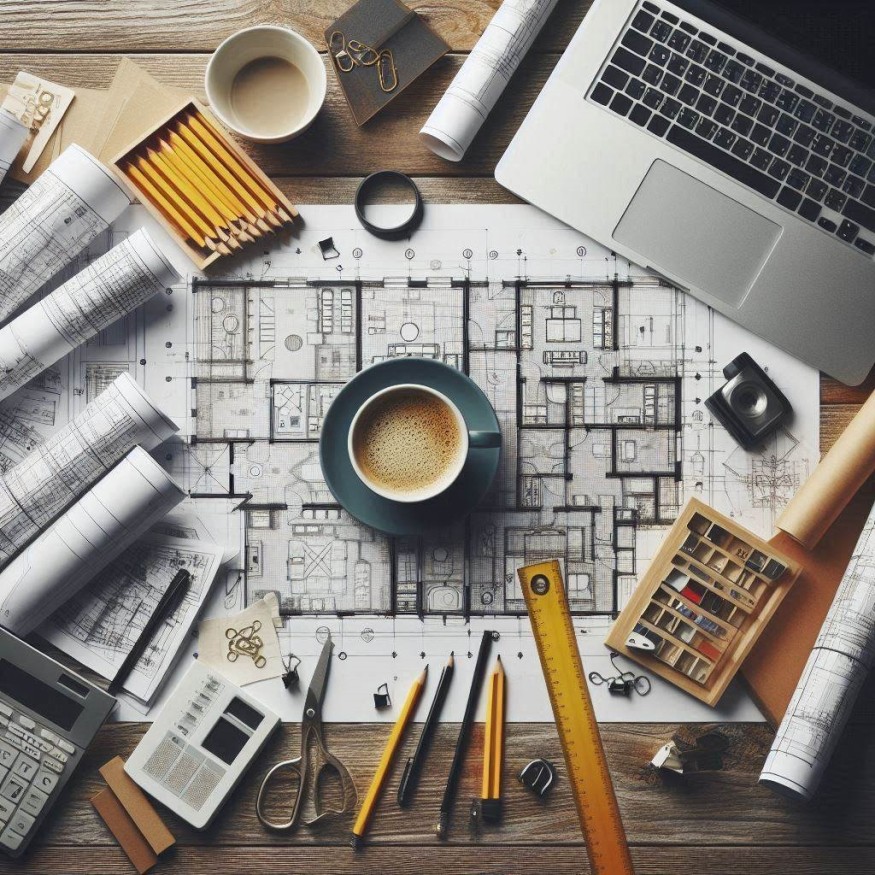Generative AI Redefining Architecture, Design and Engineering Practices

The advent of generative AI is reshaping the landscape of architecture and civil engineering, promising a future where professionals can unleash their creativity with unprecedented efficiency. By streamlining workflows and automating repetitive tasks, AI empowers architects and engineers to focus on tasks requiring human ingenuity.
Generative AI in Architecture and Civil Engineering
Generative AI tools embedded in CAD platforms enable architects and engineers to explore and iterate new design concepts swiftly. These tools leverage algorithms to generate design ideas tailored to project goals, structural requirements, and materials. For instance, Zaha Hadid Architects utilizes AI image generation to conceptualize innovative structures, accelerating the visualization and evaluation process.
In addition, AI transcends design imagination, providing a way to build digital twins, two and three-dimensional simulations of actual structures. These digital models allow complete stress tests and life-like runs to be conducted, improving the structural density and reliability long before the actual erection of the structure begins. Also, issue tracking and time management are done through automation with AI, generating probable forecasts of issues that might slow down the project.
AI's Impact on Architectural Innovation
However, the growth of AI integration in design brought a new set of problems related to ethical issues and the absence of human supervision. All these factors are essential for architects and engineers, who must try to balance the possibilities of using AI in practice while maintaining paramount safety standards. Adopting AI increases efficiency, whereas oversights are required to avoid inevitable consequences.
AI is gradually becoming integrated into architectural designs. Therefore, professionals cannot afford to dismiss AI as a revolutionizing technology while gaining strong interpersonal, innovation, and moral competence. Thus, architecture and engineering practitioners must embrace AI as a tool to transform the creative industry and produce newer products that can improve existing designs.
Furthermore, AI-integrated CAD applications enhance architects' ability to understand space utilization and design creative solutions. By identifying floor plans and specific architectural configurations, AI helps designers achieve or improve efficiency and sustainability and assists in other areas.
Moreover, AI is also helpful in other structural risk assessments to help determine when problems could arise and what maintenance is required. Technologies such as the Structural Damage Recognition Software used by Drexel University improve decisions by providing maintenance guidelines to prevent similar issues in the future.
Integrating AI into urban planning processes proves to be a significant enabler of data processing and community engagement. Data generated from the use of AI also enhances infrastructure development by providing developers with an accurate picture of an improved and sustainable state that makes cities habitable.
Embracing AI's Potential in Architectural Practice
However, concerns persist regarding AI's potential to replace human architects entirely. While AI streamlines processes and enhances productivity, its role remains supplementary, augmenting human creativity rather than supplanting it entirely. As AI continues to evolve, architects must embrace its potential while upholding ethical standards and preserving the essence of human ingenuity in architectural innovation.
In conclusion, AI represents a transformative force in architecture, offering unprecedented opportunities for innovation, efficiency, and sustainability. By embracing AI as a collaborative tool, architects can navigate the complexities of modern design while shaping a more resilient and visionary built environment for generations to come.
From Digital Models to 3D-Printed Homes: Jaspreet Kaur Lall Explains How the Innovation Changes the Construction Industry

Future Belongs to Green Construction: Sampath Kumar Paspunoori Explains One of the Key Trends in the Construction Industry

Kamala Harris' Campaign Ad Uses Iconic Visuals from Carrie Mae Weems to Connect with Voters

Historic Ancient Roman Ruins in Baalbek Remain Strong After Israeli Air Strikes; Locals Seek Cultural Protection

4 Ways to Honor Departed Loved Ones in Your Home Design














